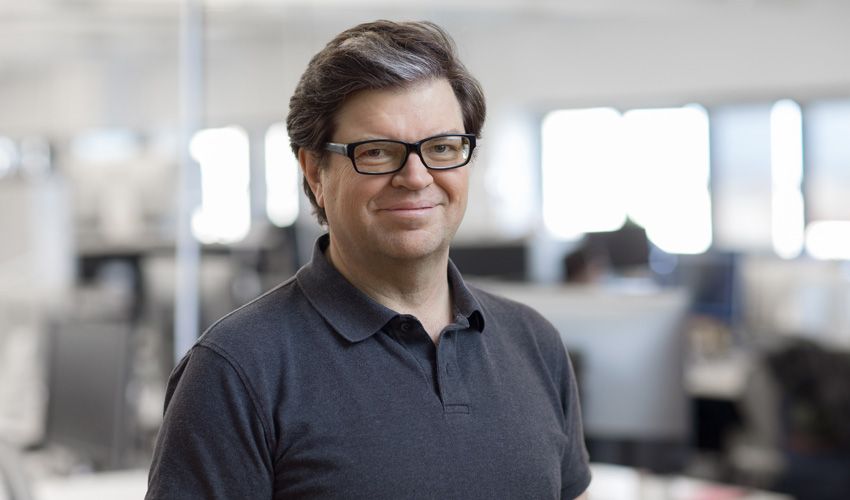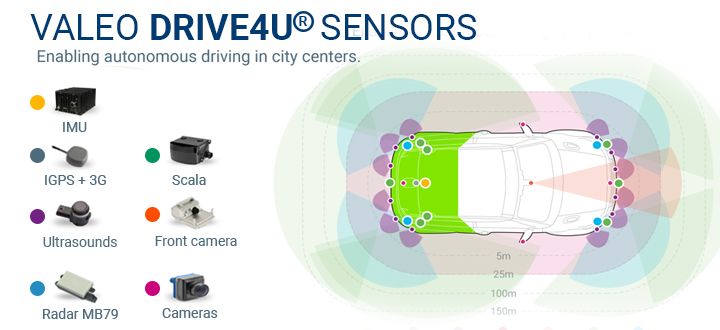
Cyril Poulet, Valeo: From LeCun's Lab to Safe Driving
Juha KiiliSometime in the '80s, the old Unix neckbeards coined the engineering truth: "First make it work, then make it right, and, finally, make it fast."
In essence, optimizing something that doesn't even work yet, is a waste. Programming languages like Lisp or Python are good at getting something to work but somewhat lacking in optimizing it. In contrast, languages like C++ are the exact opposite. When pioneering wholly new and untested concepts, it is better to pick a language where iterations are fast and execution slow, not vice versa.
It's why in the late '90s, Yann LeCun and Léon Bottou, instead of using defacto C++, created Lush - a Lisp-based programming language - to work on their new invention, convolutional neural networks (CNN). Lush offered convenient abstractions for data scientists without being overly slow. It was a pivotal groundwork for the libraries we love today, like Torch and Pytorch. We can safely say that without Lush, LeCun, Bottou, and their colleagues, deep learning, as we know it today, would not be the same.
In 2008, Cyril Poulet got to play a part in this historical storyline.

Yann LeCun - Chief AI Scientist at Meta and a grandmaster of deep learning.
As a part of his university studies, Cyril did a final internship at New York University, where Professor LeCun continued the pioneering work he had started a decade earlier. The CNNs were proven to work, so it was time to make them fast, specifically LeNet 7 - one of the first of its kind - run as fast as humanly (or inhumanly) possible. Cyril would be in charge of the software, and another intern, Clement Farabet, would be on the hardware side. The original model was in Lush, but Clement wanted to create custom hardware using field-programmable gate arrays (FPGA), which meant that Cyril rewrote the entire system in C++.
And fast it was!
The performance gain was two orders of magnitude when comparing the new version on an FPGA chip to the old Lush implementation on a CPU. The new system could detect human faces at 100 frames per second, which was mind-blowing at the time. If you are curious about how they did it, check out their paper from 2008.

Hardware accelerated LeNet 7 performed real-time face detection at 100fps (2008).
Goodbye academia, hello startups!
The adventure at NYU convinced Cyril to make a career in AI. He wrote his final thesis about multi-agent systems for the timed patrolling problem, which investigates strategies for agents to consistently collaborate in patrolling between different points of an area. One of the possible applications in the industry is maintenance in server farms, where the system can automatically ensure that all machines are tended to in a timely fashion.
After the thesis, it was time to leave academia and head into the private sector. A french startup Evergig was creating a product for an automatic video montage of live concert videos filmed by fans, which was a cornucopia of exciting engineering puzzles.
One challenge was extracting the common signal - the music - from live recordings full of the audience clapping and shouting. "This was treated as an optimization task where the signals are processed as spectrograms and, through an Expectation/Maximization process, we tried to model them as a main, common spectrogram + localized noisy ones," Cyril explains. This approach showed a lot of promise but ended up being too costly.
One of the first videos to be automatically stitched by the system was the drummer from Cyril's own band, filmed with multiple cameras.
Another exciting puzzle was extracting the most probable setlist - the order of the songs - given a set of fan-filmed gig videos and their titles. This problem can be addressed as topic extraction from NLP, but with topics known beforehand (like the name of the artist and all the songs). You can treat each video title as a "document" - a mix of several topics - and try to estimate this mix based on cost minimization. This approach worked well; the system could cut the final mix into songs and automatically title them.
Unfortunately, Evergig - like most ambitious startups - didn't skyrocket as a business and had to close down at the end of 2015. Cyril then joined Quicksign to automate data extraction, followed by years as a self-employed freelancer hopping from project to project.
Valeo: A bigger and better project
After years in small companies, growing tired of constantly solving subsidiary problems and turning off fires, he posted on LinkedIn, explaining what he was looking for in his next adventure: A very ambitious objective with a large team and the resources to pull it off.
Valeo was among the first to reach out.
They are a huge automotive supplier headquartered in France, employing over 100,000 people in 33 countries, with a mission to make future vehicles greener, smarter, and more secure. Cyril is working as a Senior Research Engineer in the driver assistant research division (DAR), trying to create a robust understanding of what is happening outside the vehicle.

Combining different sensory data to make sense of the environment.
The team currently focuses on making each sensor or camera more intelligent. In addition to a central model, each sensor will have an independent one to perform tasks like detecting objects, lanes, and parking spaces. The improved redundancy, necessary and compulsory to create vehicles approved for higher levels of autonomy, ensures that a single malfunctioning part never freezes the entire system.
Cyril finds work at Valeo very exciting, with interesting puzzles inside and outside the car and the possibility to experiment with state-of-the-art methods. He enjoys the scaffolding and resources of a big company that lets him focus on his passion without distractions.
The future of ML
The future of machine learning is always very hard to predict. Still, Cyril thinks the arms race to the biggest, deepest models will probably reach a limit soon. The field still needs to solve the problem of explainability and safety of these gigantic models for everyday tasks as they get deployed into the real world. "There will be more and more work into understanding these systems and making sure that they are safe, unbiased, and ethical," he predicts.
For aspiring young data scientists and ML engineers, he recommends not only reading the blogs and articles from the pioneers in the field but also relevant sci-fi and cyberpunk novels for inspiration. Fiction leads the way and reminds us how it can go sideways without a good dose of ethics.
We recommend Cyril's homepage for digging deeper into any of these topics. If you want to be his teammate and participate in the future of autonomous driving and safety, Valeo is hiring, too!
